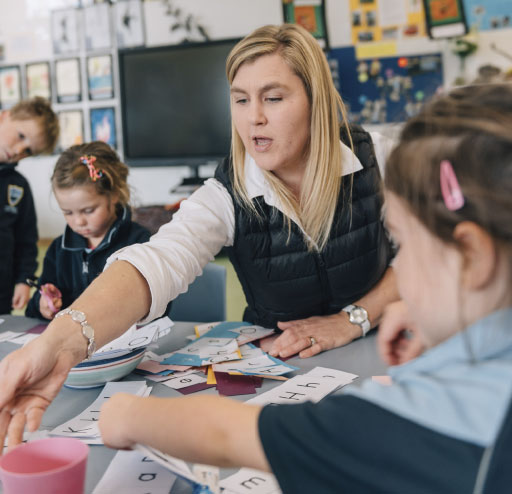Download a printable copy of this article (PDF 466KB)

- Remember that process determines fairness.
- Teach students a repeatable process for resolving conflict.
- Engage perpetrators by asking them first.
- Explain the process to finish things off.
- Deploy negotiated consequences for frequent flyers.
Having three younger sisters and being raised in a home where material advantage was scarce meant that I got used to sharing. There were some battles within that economic necessity to share, but some undoubted positives too.
It could have been a huge amount of work for my parents and particularly for my mum who was largely charged with maintaining a modicum of order in the home. After all, frequently asking four children to share is fraught with danger. At the very least, Mum risked spending many of her hours counting out equal piles of sultanas, measuring sausage slices and comparing the dimensions of bread slices. But Mum was a lot smarter than that.
Mum’s repeatable and incorruptible process for sharing was beautiful in its simplicity. She’d hand the cake, the ice cream or the apple to one of the two parties who’d be sharing and say, “You cut it in half, the other picks the one they want.” It caused me much mental angst as I internally debated the merits of being either the cutter or the chooser. In the end, I simply surrendered to the process.
What Mum was really teaching me is that there is no fair outcome without a fair process. It’s the process, the rules, the patterns by which we get things done together that will ultimately determine our views of how fair things really are.
“Fairness is not an attitude. It’s a professional skill that must be developed and exercised.”
– Brit Hume
So it is in schools when it comes to resolving conflict through a restorative methodology. Underpinning the whole intention of Restorative Practice is a belief and structure for making a process fair. We’d all do well to reflect on this from time to time and those who devised the framework make it quite easy by reducing the process to three simple Es:
- Engagement – this is all about affording those responsible for harm (and often their families too) the chance to tell their side of the story before assumptions are formed and before the student being bullied appeals to our emotions and sensitivities. We ask the student who has been engaging in the bullying behaviour for their version first. This isn’t because we’re going to believe every word they say, but because it allows them to get involved. The truth is that we’re going to need the engagement of the student who has been bullying in order to resolve their half of this relational breakdown. Both the student who is being bullied and the student engaging in the bullying behaviour care about being asked for their side of the story. What’s interesting is that it’s usually the student who has been engaging in the bullying behaviour who cares about order – so ask them first. The child who has been bullied is usually quite happy to wait for their turn, provided it’s clear that that their turn is firmly on the agenda.
- Explanation – after conflict is resolved as efficiently as possible using a past-present-future geared approach, it’s a good idea to explain exactly how we’re fixing things up. It is important to ensure that old adversarial models do not creep back into our work. A response such as “Ok, so you two behaved really rudely for your PE teacher today, making her feel angry and embarrassed. As a result, you’ve decided to make amends by picking up 25 papers at lunchtime” does nothing for the PE teacher. It is vital to get it right and explanation is a wonderful way to place a check on our process before we get to work on repairing harm.
- Expectation Clarity – this step is the one most Australian schools struggling to implement Restorative Practices are likely to be forgetting. When recidivists (repeat offenders, frequent flyers, etc) are coming back to the warmth of a restorative conversation but the frequency or severity of their behaviour isn’t improving, then an appropriate consequence has its place. This is best developed through negotiation with a question such as “So, what do you think should happen to you if that behaviour bobs up again?” Time is often an appropriate consequence to guide students towards. A lunchtime, a detention or even an internal suspension is a great time to do their restoring, to write their apologies, to record their video commitments to higher standards and to clean up PE gyms (which is what should have been encouraged in the previous example). Students for whom inappropriate behaviour patterns have become an ongoing issue need the benefit of two systems – a clearly articulated and appropriate consequence and an opportunity to repair the relational damage that has resulted from their behaviour.
This commitment to fair process isn’t likely to be received by students at first with a “Wow, this is wonderful. Can we do this every time there’s a conflict in my life?” Improving our personal skills in resolving conflict effectively and adequately is a journey far more than it is a magical moment. Be patient, deploy that process fairly and follow through. These are the keys to creativity, moral development and enhanced collaborative skill – and are critical to success as adults.










